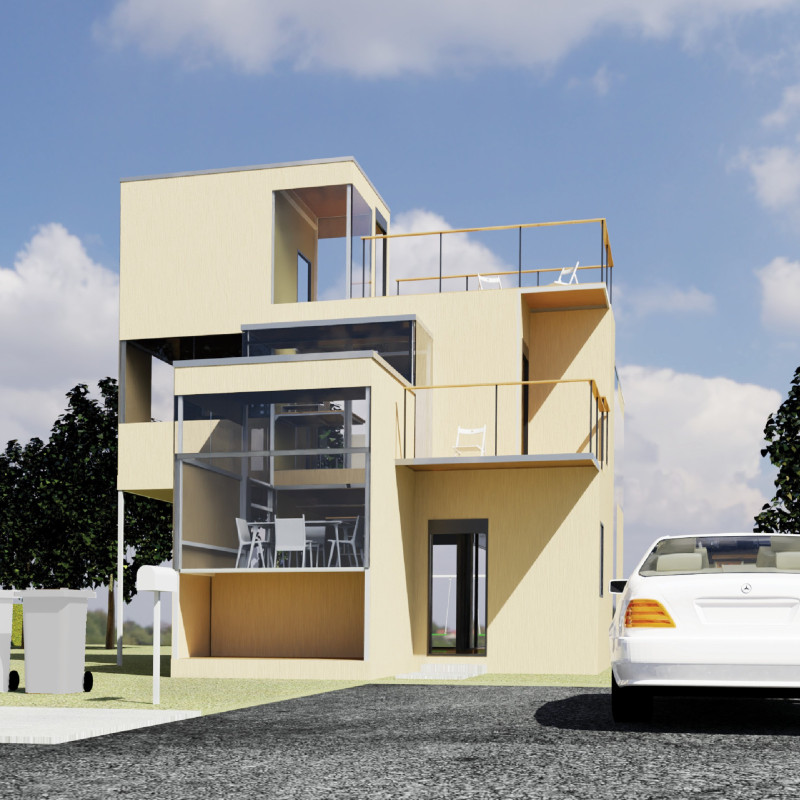5 key facts about this project
Modular housing combines efficient construction with personalized living, designed to meet the needs of modern society. It offers a flexible solution for various environments while presenting a clear concept of home. The focus is on modularity, allowing each unit to adapt to different contexts and preferences, enhancing the occupants' experience of space.
Modularity and Flexibility
Central to the design is the principle of modularity, with a rectangular plan that maximizes space. Each module can extend to four different heights, giving residents options for their interior layouts. This flexibility encourages customization, making it possible to create unique living experiences that reflect personal tastes and lifestyle choices. The arrangement of spaces can evolve depending on the needs of the inhabitants.
Efficient Structure
The structural components provide stability and support. Steel footings are utilized alongside concrete foundations to ensure a strong base. Prefabricated frames streamline the building process, making construction quicker and more efficient. The use of a slideway system for extrudable platforms allows for easier assembly on-site, reducing labor time and complexity. This organized approach helps to bring the design from concept to reality in a practical manner.
Adaptable Contexts
The housing design is intended to fit various environments, with three distinct configurations illustrating its adaptability. An urban setup emphasizes vertical spaces and circulation, promoting interaction among residents. A suburban version focuses on outdoor views and incorporates patios for leisure. The rural layout centers around a courtyard, creating an open space that connects the indoors with nature. Each configuration is a response to its surroundings, enhancing the living experience.
Customizable Facades
There is a strong emphasis on facade customization, allowing for a range of appearances that suit individual preferences. This aspect of the design encourages residents to personalize their homes within the broader structure of modularity. By offering flexibility in aesthetic choices, the project promotes a sense of ownership while maintaining the advantages of standardization in construction. The result is a community of homes that reflects diverse identities within a cohesive framework.





















































